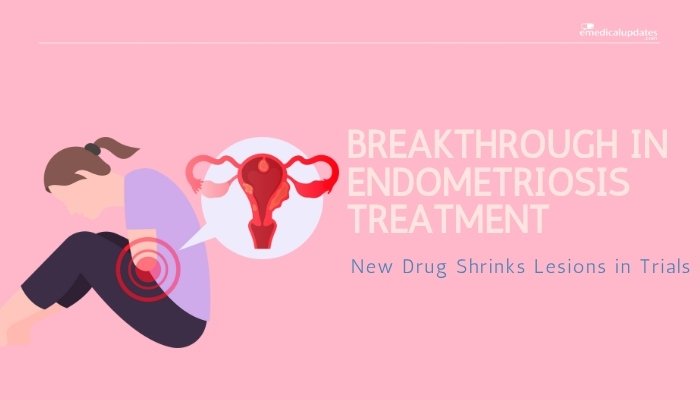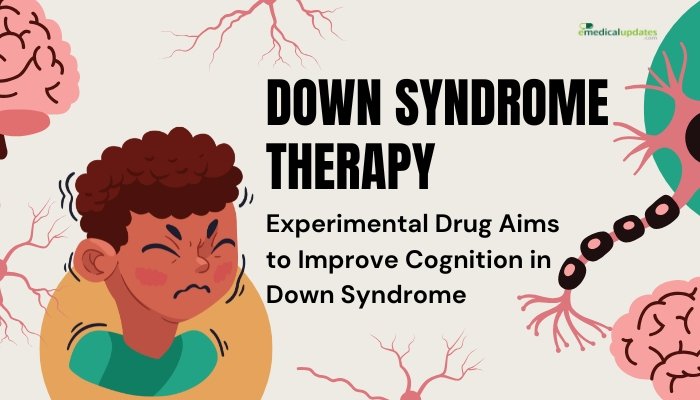Introduction
Endometriosis—in which tissue resembling the uterine lining grows outside the uterus—affects millions of women worldwide, causing pelvic pain, heavy periods, and fertility issues. Traditional treatments, such as hormonal therapies and surgery, often yield incomplete relief and carry side effects or recurrence risks.
Now, a new drug under development reportedly shrinks endometriosis lesions significantly, offering renewed hope for more effective, less invasive management. Below, we explore how this therapy works, the clinical trial data, and what it might mean for endometriosis care.
The Burden of Endometriosis
Symptoms and Impact
- Chronic Pain: Severe pelvic pain, painful periods, painful intercourse, and more.
- Reduced Quality of Life: Ongoing discomfort can affect careers, relationships, and mental health.
- Fertility Challenges: Lesions and scarring may hamper conception or lead to ectopic pregnancies.
Why New Treatments Are Needed
While existing hormonal options (like birth control pills, GnRH agonists) can suppress lesion growth, they don’t cure endometriosis. Surgery to remove or burn lesions can bring relief, but the condition often recurs. A medication that can actively shrink endometriosis tissue—beyond just controlling symptoms—would represent a major therapeutic advance.
The Experimental Drug
Mechanism of Action
Though specifics remain proprietary, the new agent likely tackles molecular pathways driving endometriosis lesion proliferation:
- Hormonal Modulation: Possibly diminishing estrogen’s local effects on endometrial-like tissue.
- Inflammatory Pathway Blockade: Targeting cytokines or growth factors that fuel lesion growth.
- Direct Lesion Inhibition: Disrupting cell cycle processes in the ectopic tissue.
Delivery and Dosage
Researchers are developing it as an oral pill or once-daily injection, simplifying usage compared to some older therapies requiring regular clinic visits or complex injection schedules.
Clinical Trial Insights
Phase II Data
In mid-stage trials, participants with moderate to severe endometriosis pain showed:
- Lesion Reduction: Imaging or laparoscopic assessments indicated smaller lesion size in a majority of treated patients.
- Pain Relief: Participants reported improved daily function and lowered reliance on NSAIDs or opioids.
- Manageable Side Effects: Common complaints included mild GI upset or headache; no severe adverse events noted so far.
Ongoing Trials
Researchers are expanding to Phase III trials with larger, diverse cohorts to confirm safety and efficacy. They’ll compare the new drug to existing standard-of-care therapies, measuring changes in lesion volume, pain scores, and quality of life over an extended timeframe.
Benefits Over Existing Treatments
- Direct Lesion Shrinkage: Instead of primarily managing symptoms, the drug claims to address the root tissue growth.
- Potentially Fewer Recurrences: Suppressing regrowth might reduce the cyclical nature of endometriosis relapses.
- Improved Tolerability: Early data show fewer hormonal side effects than some current options, though final confirmation awaits larger trials.
Challenges and Considerations
Long-Term Safety
Any new therapy must demonstrate minimal severe effects on bone density, cardiovascular health, and fertility. Post-marketing surveillance will be key if regulators approve it.
Cost and Access
Advanced novel medications can be expensive, and insurance coverage might not be immediate. Advocates push for better coverage to address a condition affecting so many women’s daily lives.
Suitability for All?
Varying forms of endometriosis (deep infiltrating vs. superficial) may respond differently. Some subpopulations—like patients seeking pregnancy—may need specific guidelines on drug usage.
Potential Future Directions
Combination Therapies
This new drug might work best combined with low-dose hormonal therapies or anti-inflammatory agents, maximizing lesion suppression and alleviating pain.
Personalized Medicine
As genetic and molecular profiling becomes more common, clinicians could tailor endometriosis treatments—matching patients’ unique hormone receptor patterns or inflammatory markers to the best drug.
Non-Surgical Management Paradigm Shift
If proven effective, such a medication could delay or reduce the need for multiple surgeries, leading to a new standard approach focused on disease regression rather than repeated lesion removal.
Frequently Asked Questions
- Is this drug likely to cure endometriosis?
- “Cure” is ambitious. The hope is significant lesion shrinkage and sustained symptom control, though endometriosis can be chronic and complex.
- How soon could it be available?
- If Phase III trials confirm results, regulatory approval could come within a few years, but this timeline depends on trial completion and review processes.
- Will it help with fertility?
- Reducing endometrial lesions may improve fertility for some, but the medication’s direct fertility impact is not yet fully known.
- Are side effects less severe than current hormone treatments?
- Initial data suggests a favorable profile, but large-scale trials will better define its side effect spectrum.
- Will it replace surgery?
- Possibly for some patients. However, advanced or severe cases may still require surgical intervention in conjunction with medication.
Conclusion
A new drug that actively shrinks endometriosis lesions offers a potentially transformative leap in managing a painful, recurring condition that eludes many existing therapies. Preliminary trial data already show promise for reducing both lesion size and related pain, positioning this therapy as a major step toward less invasive, more effective treatment. If larger trials uphold these encouraging findings, patients may soon have an alternative that lessens or delays the need for surgical solutions—improving day-to-day quality of life and long-term disease management.
Despite the optimism, crucial questions about safety, long-term outcomes, and cost remain. Endometriosis is a multifaceted disorder, so a multi-pronged approach—incorporating lifestyle modifications, physical therapy, and possibly complementary treatments—likely remains vital. Still, for millions seeking real relief, this drug’s success could mark a long-awaited shift in how clinicians and patients approach endometriosis care worldwide.
References
-
- Giudice LC, Kao LC. (2004). “Endometriosis.” Lancet.
-
- Taylor HS, et al. (2020). “Emerging therapies for endometriosis: beyond hormonal suppression.” Nat Rev Endocrinol.
-
- Bulun SE. (2019). “Endometriosis: biology and clinical management.” NEJM.
-
- Endometriosis Association (2022). “Clinical Trials Tracker for new endometriosis treatments.”







